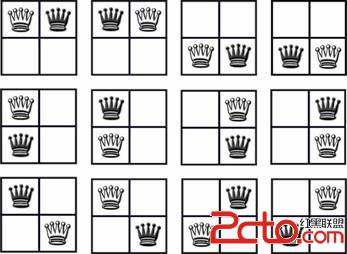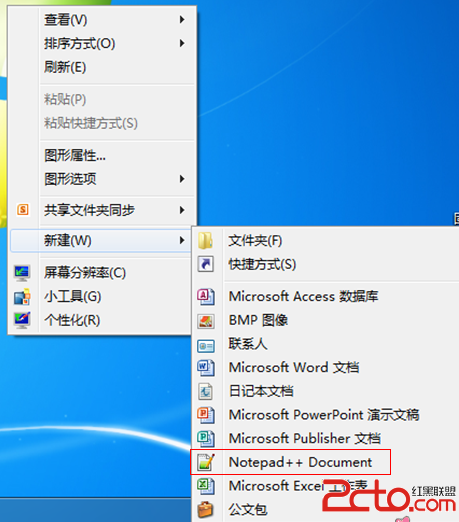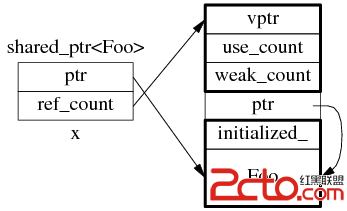一步一步写算法(之通用数据结构)
【 声明:版权所有,欢迎转载,请勿用于商业用途。 联系信箱:feixiaoxing @163.com】
上一篇博客介绍了通用算法,那么有了这个基础我们可以继续分析通用数据结构了。我们知道在c++里面,既有数据又有函数,所以一个class就能干很多事情。举一个简单的例子来说,我们可以编写一个数据的class计算类。
view plaincopy to clipboardprint?class calculate{
int m;
int n;
public:
calculate():m(0),n(0) {}
calculate(int a, int b):m(a),n(b) {}
~calculate() {}
int add() { return m+n; }
int sub() { return m-n; }
int mul() { return m *n;}
int div() { return (n!=0) ?m /n : -1;}
};
class calculate{
int m;
int n;
public:
calculate():m(0),n(0) {}
calculate(int a, int b):m(a),n(b) {}
~calculate() {}
int add() { return m+n; }
int sub() { return m-n; }
int mul() { return m *n;}
int div() { return (n!=0) ?m /n : -1;}
}; 那么我们可不可以仿造这个思路,在常用的数据结构里面添加一些函数指针呢?至于为什么要这些函数指针,主要是因为我们设计的数据结构是通用的数据类型,那么其中必然有一些譬如compare的函数需要具体数据类型的参与。现在,我们定义一个循环队列,
view plaincopy to clipboardprint?typedef struct _QUEUE
{
int start;
int end;
int length;
int count;
void** head;
int (*compare)(void*, void*);
void (*print)(void*);
void* (*find)(void*, void*);
}QUEUE;
typedef struct _QUEUE
{
int start;
int end;
int length;
int count;
void** head;
int (*compare)(void*, void*);
void (*print)(void*);
void* (*find)(void*, void*);
}QUEUE; 那么QUEUE的创建函数、打印函数有什么区别吗?
view plaincopy to clipboardprint?QUEUE* create_new_queue(int length)
{
QUEUE* pQueue;
if(0 == length)
return NULL;
pQueue = (QUEUE*)malloc(sizeof(QUEUE));
assert(NULL != pQueue);
pQueue->head = (void**)malloc(sizeof(void*)* length);
assert(NULL != pQueue->head);
pQueue->start = 0;
pQueue->end = 0;
pQueue->count = 0;
pQueue->length = length;
pQueue->compare = compare;
pQueue->find = find;
pQueue->print = print;
return pQueue;
}
QUEUE* create_new_queue(int length)
{
QUEUE* pQueue;
if(0 == length)
return NULL;
pQueue = (QUEUE*)malloc(sizeof(QUEUE));
assert(NULL != pQueue);
pQueue->head = (void**)malloc(sizeof(void*)* length);
assert(NULL != pQueue->head);
pQueue->start = 0;
pQueue->end = 0;
pQueue->count = 0;
pQueue->length = length;
pQueue->compare = compare;
pQueue->find = find;
pQueue->print = print;
return pQueue;
}
有了函数指针之后,整个数据结构显得有点复杂。但是我们没有办法,这是设计通用数据结构必须花的一个代价。那么有了这个数据结构之后,如何才能实现对整个队列的数据打印呢?朋友们可以自己写一下,再看看我写的是否正确。
view plaincopy to clipboardprint?void print_value_in_queue(QUEUE* pQueue)
{
int index ;
int end;
if(NULL == pQueue || 0 == pQueue->count)
return;
end = pQueue->start;
if(end < pQueue->end)
end = pQueue->end + pQueue->length;
for(index = pQueue->start; index < end; index ++){
pQueue->print(pQueue->head[index % pQueue->length]);
}
return;
}
void print_value_in_queue(QUEUE* pQueue)
{
int index ;
int end;
if(NULL == pQueue || 0 == pQueue->count)
return;
end = pQueue->start;
if(end < pQueue->end)
end = pQueue->end + pQueue->length;
for(index = pQueue->start; index < end; index ++){
pQueue->print(pQueue->head[index % pQueue->length]);
}
return;
}
总结
补充:软件开发 , C语言 ,




